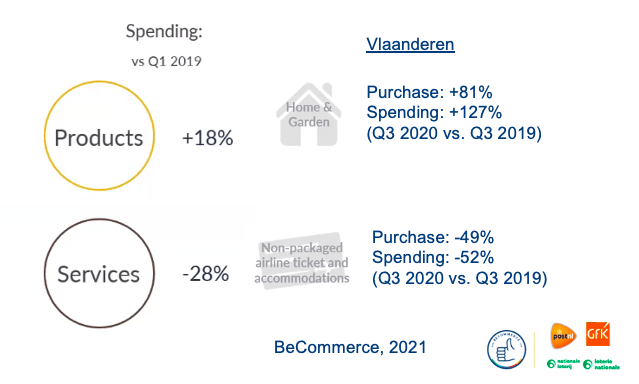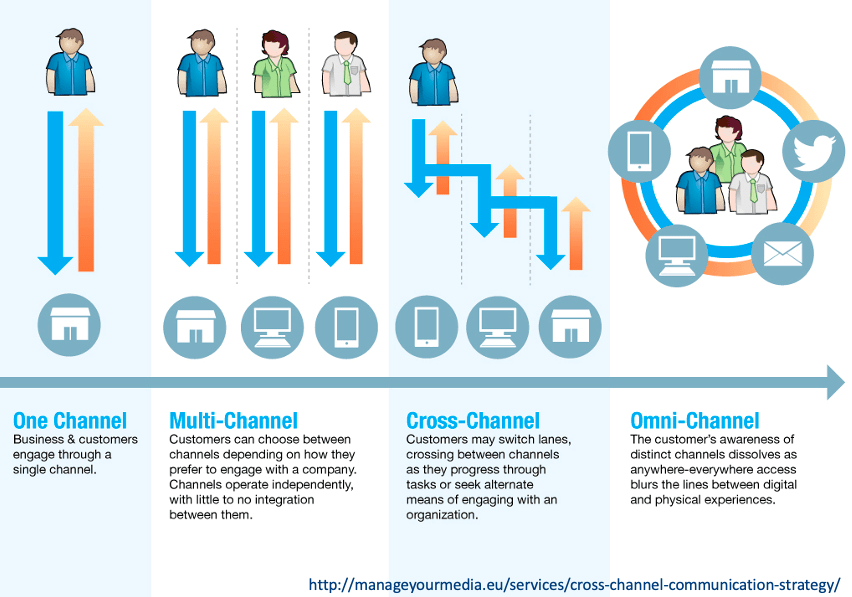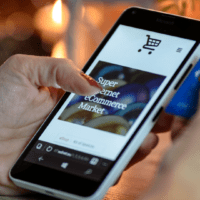Omni-channel Strategies & E-commerce
As of last week, we’ve had the opportunity to attend a truly interesting webinar from Els Breugelmans (KU Leuven) on Omni-channel & E-commerce. Let me take you through some key take-aways and let’s have a look at some future e-commerce trends & challenges!
Understanding the E-commerce landscape as of today
First of all, to understand the e-commerce landscape on a national and international scale it is important to look at the different buyer-categories. To start off, let’s look at some categories of the pre-Covid era (2019) on where consumers would spend most of their purchases online:
- 87% Non-packaged Airline Tickets & Accommodation (services).
- 79% Tickets for attractions and events (services).
- 65% Package holidays (services).
- 50% Media & entertainment (product).
- 46% Toys (Product).

Moving forward, it’s safe to say that the pandemic has shifted these categories. Whereas we used to spend more money on travel & events, the majority of our current (2021) online purchases were used for entertainment and products to enjoy ourselves. Furthermore, there has been a big increase in online grocery shopping. As you might have seen in our recent 4PS newsletter post, the Ahold/Delhaize group reported a 14.2% increase in sales in 2020. The fourth quarter was particularly good for the online sales, with an increase of 84.2% (!)
“COVID-19 is the catalyst for e-commerce”
The next question arises: will the outcome of this global pandemic eliminate the physical store completely? The simple answer is no. People like to try on clothing, to see and feel the fabric and most of all; experience the in-store features as part of their physical activities. The stores will incorporate digital as part of the journey. The pandemic has been the catalyst for the digital process that already was going on. This means that companies that prepared for the future consumer behavior will have a bigger chance to survive. Being responsive to change is important here.
Omni-channel: the way forward?
Companies need to reflect on their past/current way of doing business. If you are still using a single channel or multi-channel approach, you might want to reconsider. It’s centered around bringing information across on different channels using direct and indirect channels (incl. website, socials, email, mobile, etc.). Furthermore, this typically builds individual sales channels that aren’t connected as well as information that cannot be transferred across channels.
Request your FREE whitepaper Omnichannel Marketing StrategyOn the other hand, omni-channel offers a retail strategy that build to provide customers with a fully integrated shopping experience. This is done by uniting user experience from brick-and-mortar to mobile-browsing and everything in between. Customer centricity is a very important aspect of any omni-channel strategy.

A great example of an omni-channel approach is Starbucks’ loyalty rewards program. While the rewards program is primarily run through the rewards app on a participant’s mobile device, users can add money to their rewards account via multiple channels, including: Their mobile device. Through the website.
Key takeaways
- Digital (r)evolutions have changed retail practices & consumer behavior.
- COVID-19 = catalyst.
- Companies need to reflect on their current way of business. (customer-centric thinking, omni-channel strategy)
- Physical stores can still play an important role.
- Ultra-convenient OR experience-driven OR hyper-personalized OR sustainable.
- Lots of uncertainty (even more due to COVID-19).
Feel free to let us know your thoughts and please share your ideas! At 4P square we’re always on the lookout to help you implement and execute your e-commerce challenges!
About the author
This article was written by Alexander Adams, a marketing consultant at 4P Square. He has a particular interest in (digital) branding, and he brings expertise to the overall product marketing strategy. He’s been active in various industries, ranging from tech to automotive, where he connected dots between digital marketing & sales. You can find him on LinkedIn or reach out to him directly via the 4P Square contact form.


